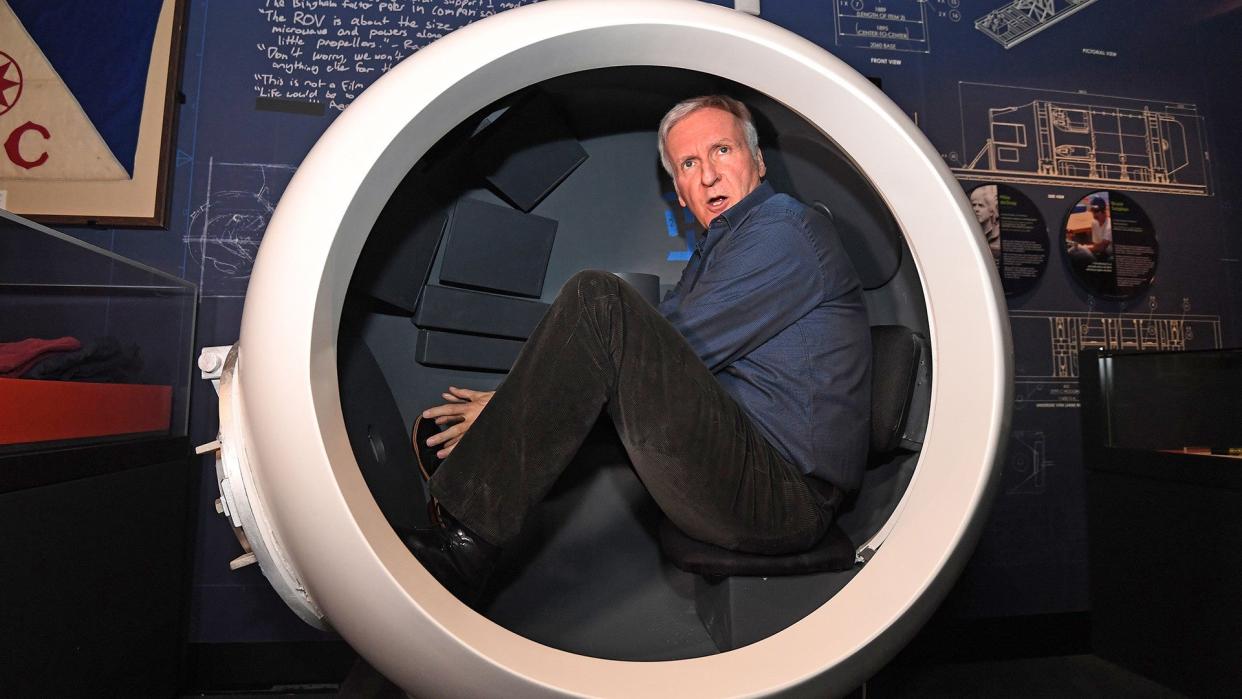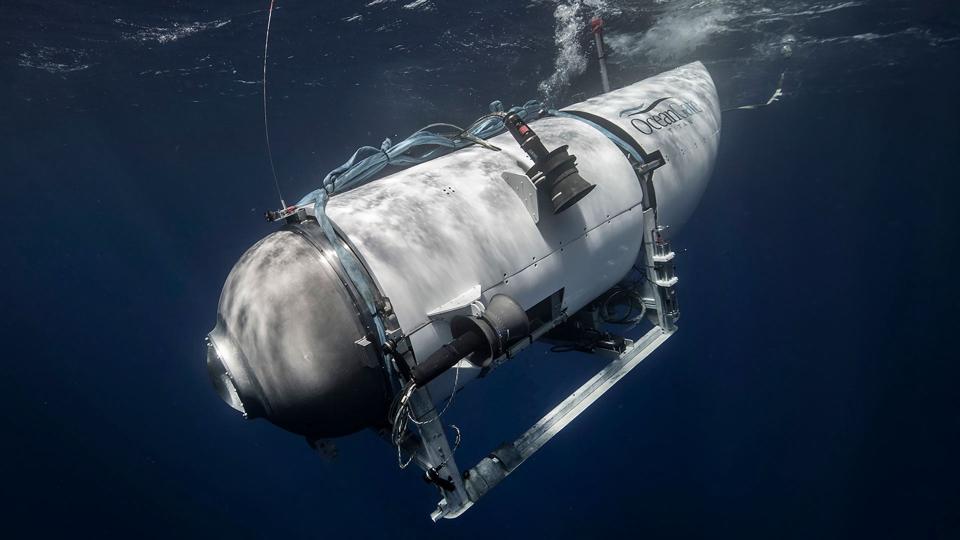James Cameron's Take On The Titan Disaster Is The Best We've Heard

- Oops!Something went wrong.Please try again later.
James Cameron, the famed director of the 1997 film Titanic and many other critically acclaimed movies, has offered some significant words of wisdom on the recent tragedy involving the Titan submersible in an interview with ABC News. Cameron is also an experienced underwater explorer who has made 33 trips to the wreck of the RMS Titanic. He also led the development of a deep-diving submersible that allowed him to become the first person to make a solo descent to the deepest known seabed on Earth, a part of the Mariana Trench called Challenger Deep.
The U.S. Coast Guard announced earlier today that it had located a new debris field near where the remains of Titanic sit at the bottom of the Atlantic Ocean and subsequently determined it to be the remains of OceanGate Expedition's Titan submersible. Based on that wreckage, the Coast Guard said it determined that Titan, an unusual design making heavy use of carbon fiber, the safety of which had previously been called into question, most likely suffered a catastrophic decompression.

The Wall Street Journal has also now reported that a highly classified U.S. Navy underwater sensor network designed to monitor for potential submarine activity detected the implosion days ago. The War Zone highlighted how this was likely to be the case in our initial reporting on this incident earlier this week.
Five people, including OceanGate's CEO Stockton Rush and world-renowned French diver and explorer Paul-Henry Nargeolet, died in the accident. The Coast Guard says it is unclear whether or not it will be possible to recover their remains.
"I'm struck by the similarity of the Titanic disaster itself, where the captain was repeatedly warned about ice ahead of his ship, and yet he steamed at full speed into an ice field on a moonless night. And many people died as a result," Cameron told ABC News. "And for a very similar tragedy, where warnings went unheeded, to take place at the same exact site, with all the diving that's going on all around the world, I think it's just astonishing."
You can watch Cameron's full interview with ABC News in the Tweet below.
https://twitter.com/ABC/status/1671965549381689533?s=20
The famous (or infamous) ocean liner sunk after hitting an iceberg in 1912. The ship broke apart in the process and what's left of both sections are now sitting at a depth of around 12,500 feet.
https://www.youtube.com/watch?v=adfA6VklSyo
Cameron highlighted how deep-sea diving expeditions are inherently dangerous, but that the factors at play are also well-known at this point. He highlighted the lack of any other major accidents in the decades since this kind of diving using specialized submersibles really came into its own in the 1960s.
It's "absolutely critical for people to really get the take-home message from this... [that] deep submergence diving is a mature art," he said. "From the early 60s, where there were, you know, a few accidents, nobody was killed, in the deep submergence [field] until now is more time than between Kitty Hawk [the first flight of a practical aircraft in 1903] and the flight of the first [Boeing] 747 airliner," which occurred in 1969.
"We have improved drastically over that period of time and" adopted new "certification protocols" that "all other deep submergence vehicles, except this one [Titan], that carry passengers especially, paying passengers, all over the world" are required to meet," Cameron continued.
"The safety record is the gold standard. Absolutely," he added. "Not only no fatalities, but no major incidents requiring all of these assets to converge to a site."
https://twitter.com/Maxar/status/1671948558269042688
At the same time, Cameron noted that the possibility of a catastrophic decompression and implosion scenario, in particular, is a "nightmare we've all lived with" in the deep submergence community, which he also stressed is a relatively small and tight-knit group.
"Because implosion... such a violent event, is first and foremost in our minds, the pressure boundary, which is what they call the hull of the sub that people go inside, is obviously first and foremost in our minds as engineers. So, we spend so much time and energy on that," he explained. "And we use all the computerized tools available today."
"We worked on our sphere for our deep, deep vehicle [called Deepsea Challenger] that went to the Challenger Deep for over three years just in the computer before we even made the thing, and then, of course, we pressure tested it over and over and over and so on," Cameron continued. "So, you know this is a mature art and many people in the community were very concerned about this sub [Titan]. And a number of... the top players in the deep submergence engineering community even wrote letters to the company [OceanGate], saying that what they were doing was too experimental to carry passengers and that needed to be certified and, and so on."
https://www.youtube.com/watch?v=FGzaUiutuRk
OceanGate was founded in 2009 and rolled out its first submersible design, Cyclops, in 2015. Titan was unveiled in 2018.
Since Titan went missing, a mountain of details about the at best lax attitude toward standard engineering practices and safety at OceanGate have emerged or otherwise been called attention to.
In 2018, the company even found itself embroiled in a lawsuit with a former employee who said they were wrongly fired for raising safety concerns, including about how deep Titan could dive. That case was settled and the specific claims were not independently verified. However, OceanGate CEO Rush did subsequently admit there were issues that had led to Titan's maximum depth rating being downgraded to the point where it would not have the ability to get down to the Titanic wreck. What repairs and/or changes to the design were made after that is not entirely clear, but Titan made its first trip down to the Titanic in 2021.
"It's really quite surreal," Cameron, who highlighted his personal friendship with Paul-Henry Nargeolet, said on ABC News today about the entire incident. "For him [Nargeolet] to have died tragically in this way is almost impossible for me to process."
Hopefully, the lessons that Cameron laid out in his interview will be taken to heart by any other companies looking to break into the world of these complex and potentially dangerous deep-sea descents in the future.
Contact the author: joe@thedrive.com

